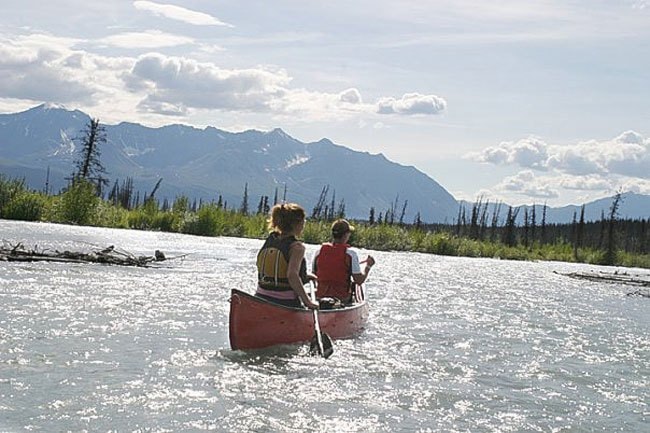Champagne and Aishihik First Nations were opposed to Yukon Energy’s plan to build a hydro dam on their traditional territory.
But now, the First Nations are considering power sources of their own.
Last week, the Haines Junction-based First Nations received $30,000 from the Canadian Northern Economic Development Agency to look at hydro and wind options.
The First Nations explored wind and hydropower about 15 years ago, said Dakwakada Development Corporation manager Murray Arsenault.
“But 15 years ago, the Yukon was not in the energy situation it is now.”
With new mines expected to link into the grid, and growing residential demand, the territory is facing a looming energy crisis.
“So we’re looking at these projects again,” said Arsenault.
The development corporation will use the $30,000 to do baseline studies, he said.
“I mean, we know it’s windy out here,” he said. “But that’s not enough.”
The baseline studies should give Champagne and Aishihik an idea of where to put their windmills, and if there is even enough wind.
The First Nations are also considering a mini-hydro project on the Kathleen River.
“We are looking at its economic viability,” said Arsenault.
For the last few years, Yukon Energy has been researching the possibility of diverting water from the Gladstone chain of lakes into the Sekulmun-Aishihik Lake system to produce up to 18 gigawatt hours of electricity annually, using the turbines at the Aishihik hydro facility.
These lakes are in Champagne and Aishihik’s traditional territory.
“It’s very controversial for our people,” said Champagne and Aishihik Chief James Allen in a previous News interview. “And I have not met anyone who supports it.”
Allen was worried about potential environmental damage and the project’s impact on fish and wildlife.
The Department of Fisheries and Oceans was worried about the same thing.
Its report, dated Sept. 30, 2010 put the kibosh on Gladstone.
“Due to the significance of the potential impacts to fish and fish habitat, Fisheries and Oceans is not prepared to consider a Fisheries Act authorization for your proposal at this time,” it stated.
But Yukon Energy president David Morrison remained hopeful.
“Fisheries and Oceans hasn’t looked at the science,” said Morrison last April. “It was just a preliminary letter.”
Arsenault did not want to talk about the Gladstone proposal.
“We are not a political organization and don’t take positions,” he said.
The wind and hydro projects the First Nations are considering are nowhere near the size and scope of the Gladstone proposal, he added.
Contact Genesee Keevil at
gkeevil@yukon-news.com
